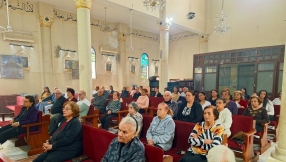Making way for women bishops
Runcie is said to have rejected it out of hand. “I don’t want to go down in history as the Archbishop who presided over the break-up of the Church of England.”
The spotlight has moved to women bishops but the issue of how to make provisions for a minority which is unable to accept them continues to snag progress. The next sessions of the General Synod to be held in February 2010 may well be decisive.
In July 2008, the Revision Committee on Women in the Episcopate met to draft legislative proposals for debate in February. To the consternation of those in favour of women bishops they announced a way forward which on the face of it seemed contrary to what they had been instructed to do by the July sessions.
What the Synod wanted was a simple measure which would not permanently give a different status to men and women bishops. Instead the Revision Committee suggested a framework which included special powers for bishops who would provide oversight for people and parishes unable to receive the Episcopal or priestly ministry of women. It was effectively a replay of the scenario rejected by Archbishop Runcie over two decades ago.
The action of the Revision Committee plunged Synod members into turmoil. Members of WATCH, strong proponents of women’s ministry, protested loudly. They were joined by others who said the proposals added up to a two-tier episcopate with women bishops in a permanently second-class position.
Two developments have occurred since. First, in October the Pope surprised everyone with the offer of a structure to enable dissatisfied Anglicans to become a special constituency within the Catholic Church, keeping their own priests and liturgies.
Second, at its most recent meeting on November 13, the Revision Committee admitted that after taking soundings it was clear it lacked the support needed to get its legislation through Synod.
While the action by Pope Benedict clearly ruffled Anglican feathers it handed a lifeline to those who wanted a simple Measure bringing forward women bishops. It has if anything hardened the attitudes of WATCH and its allies.
Even so the Synod will have its work cut out to cover all the bases. It will be trying to find a formula that enables full inclusion of women to the episcopate while showing due respect for those who in conscience cannot accept women’s Episcopal leadership.
John Martin is Media Officer for Fulcrum, a middle-ground evangelical network and a former editor of The Church of England Newspaper













